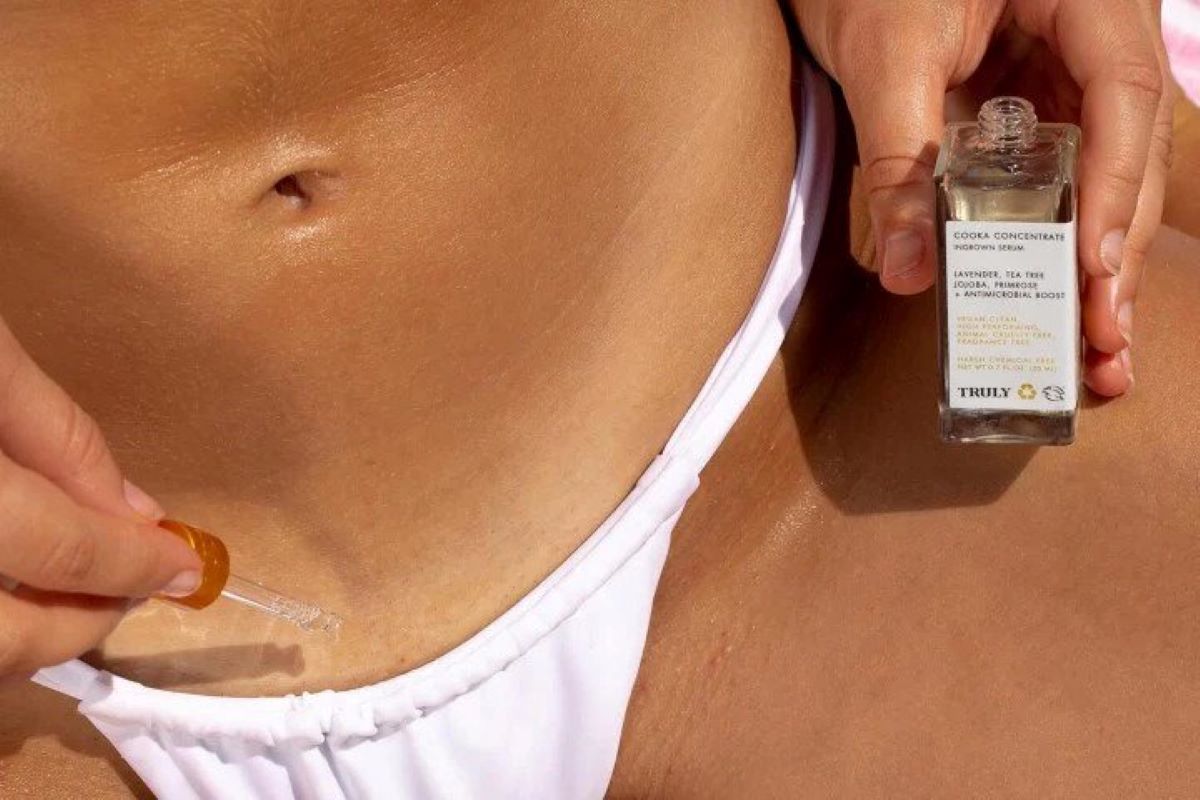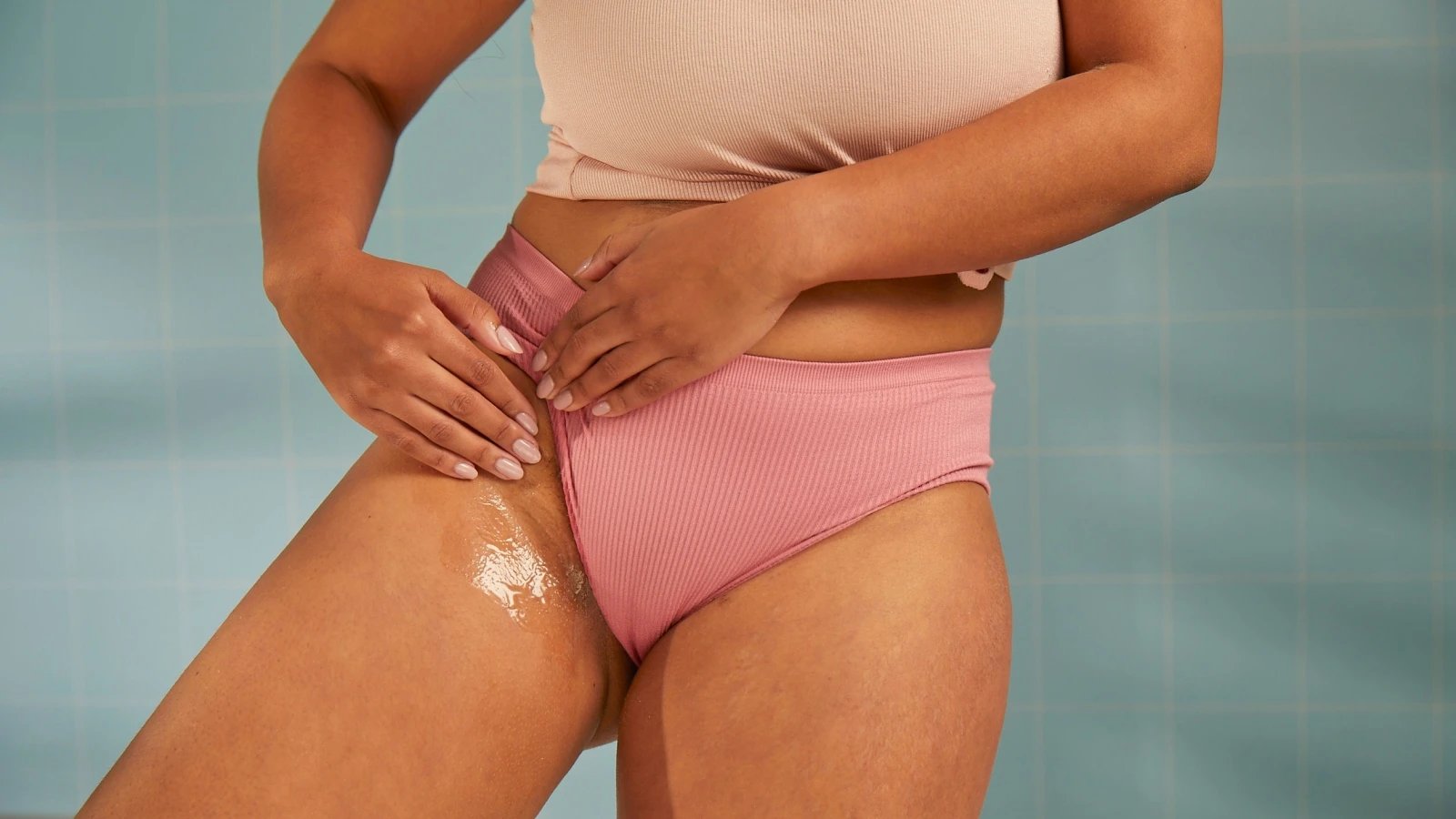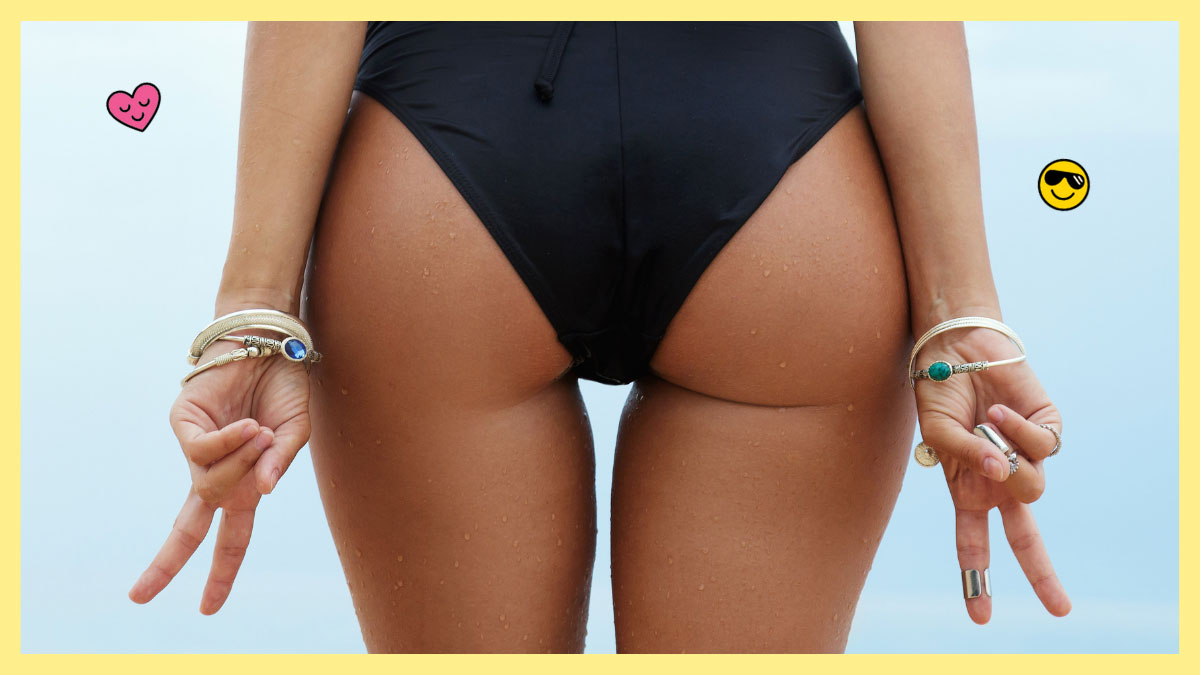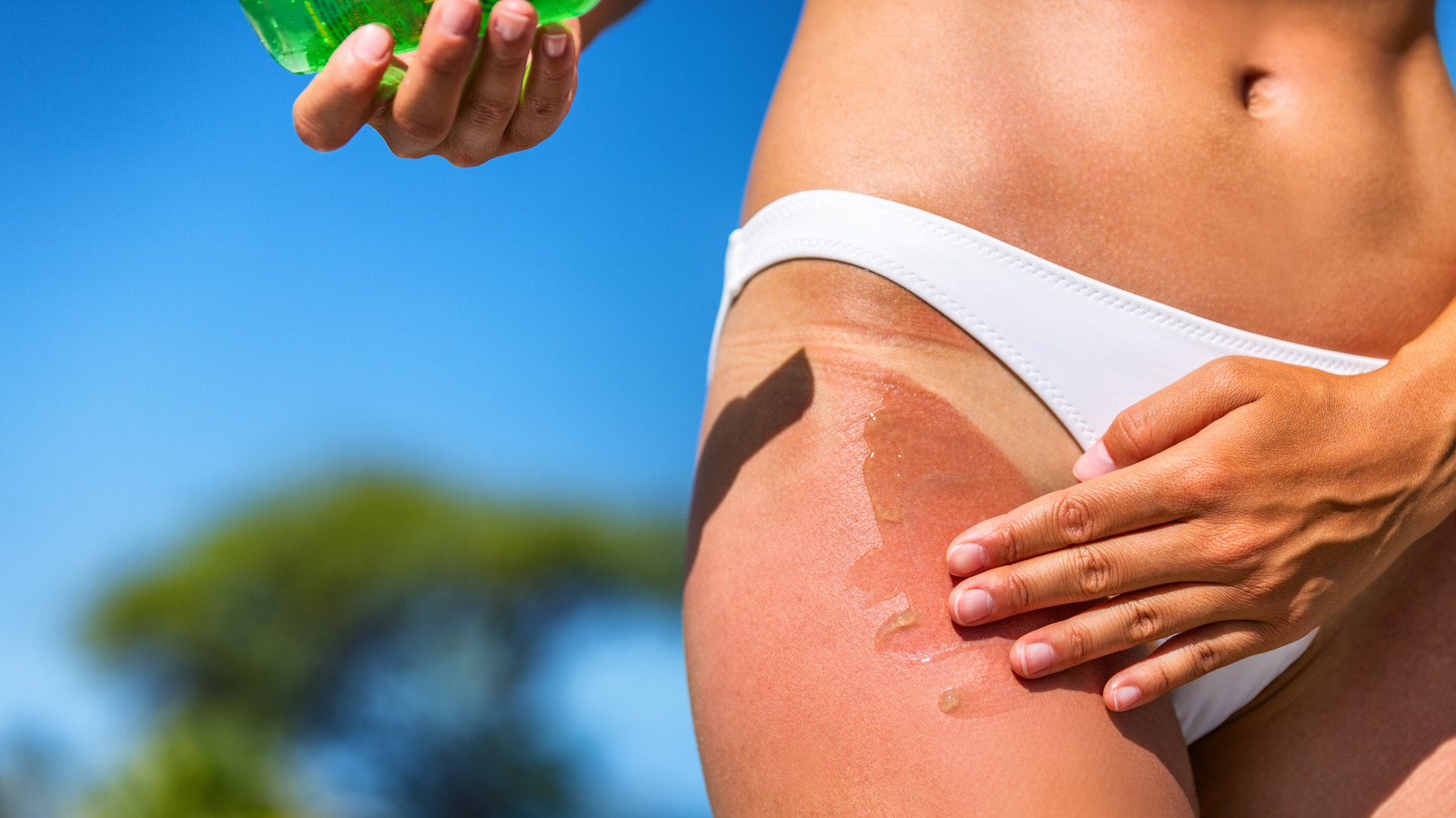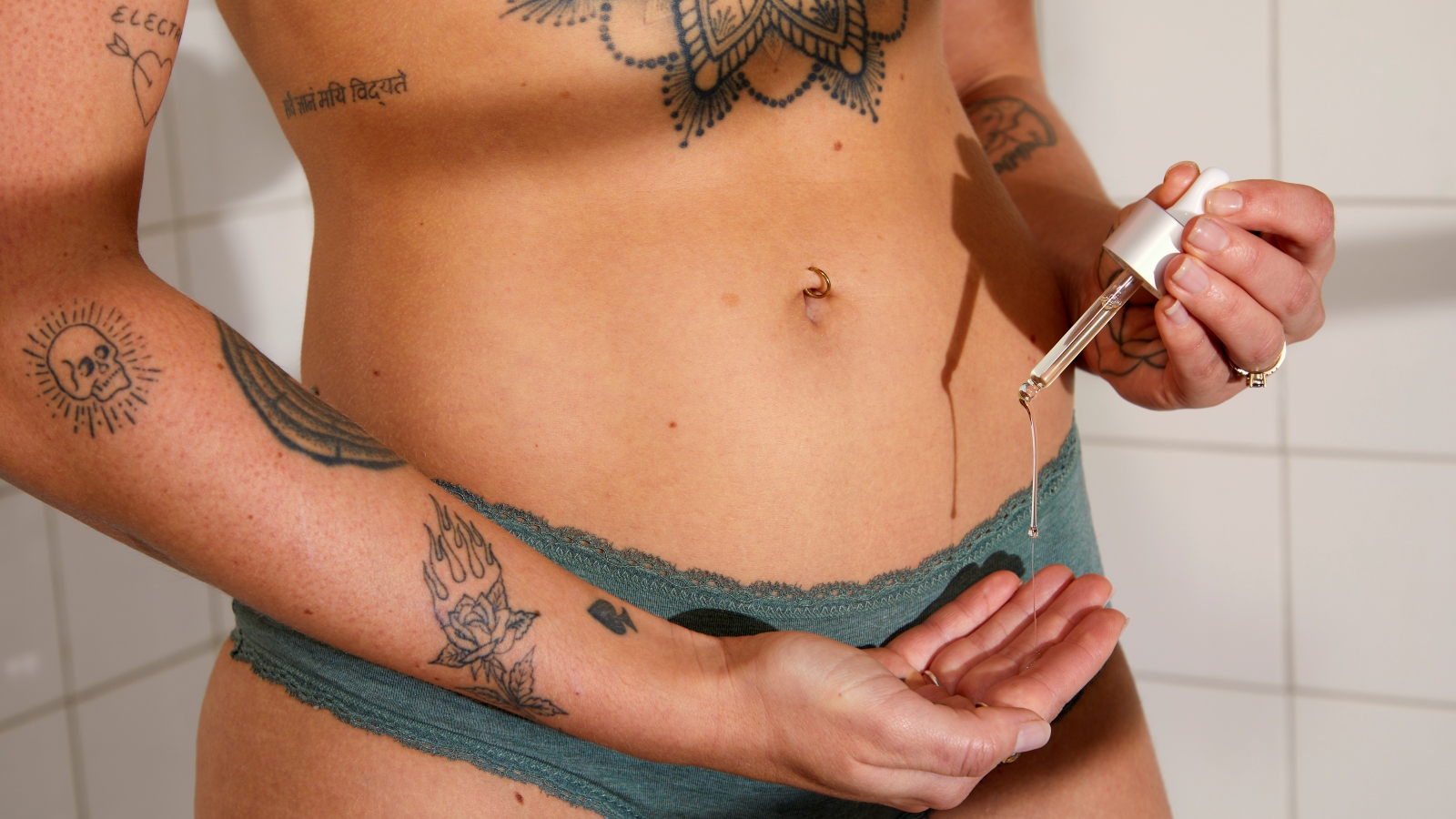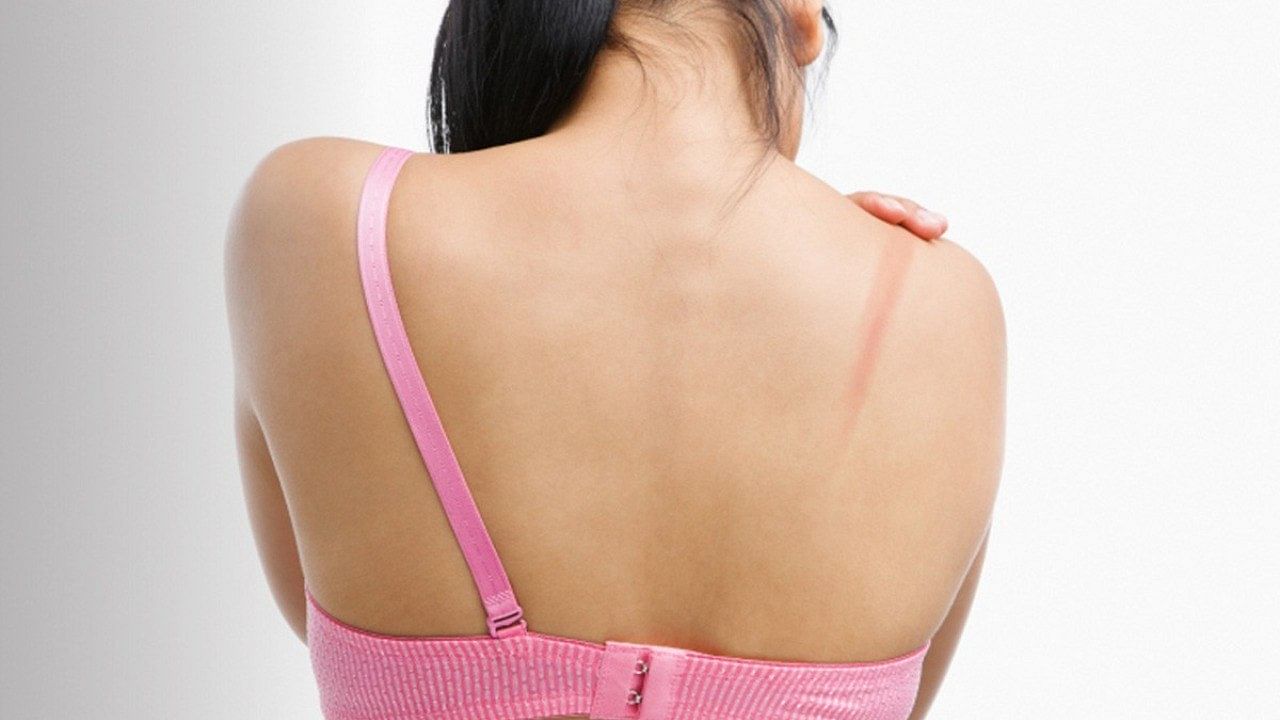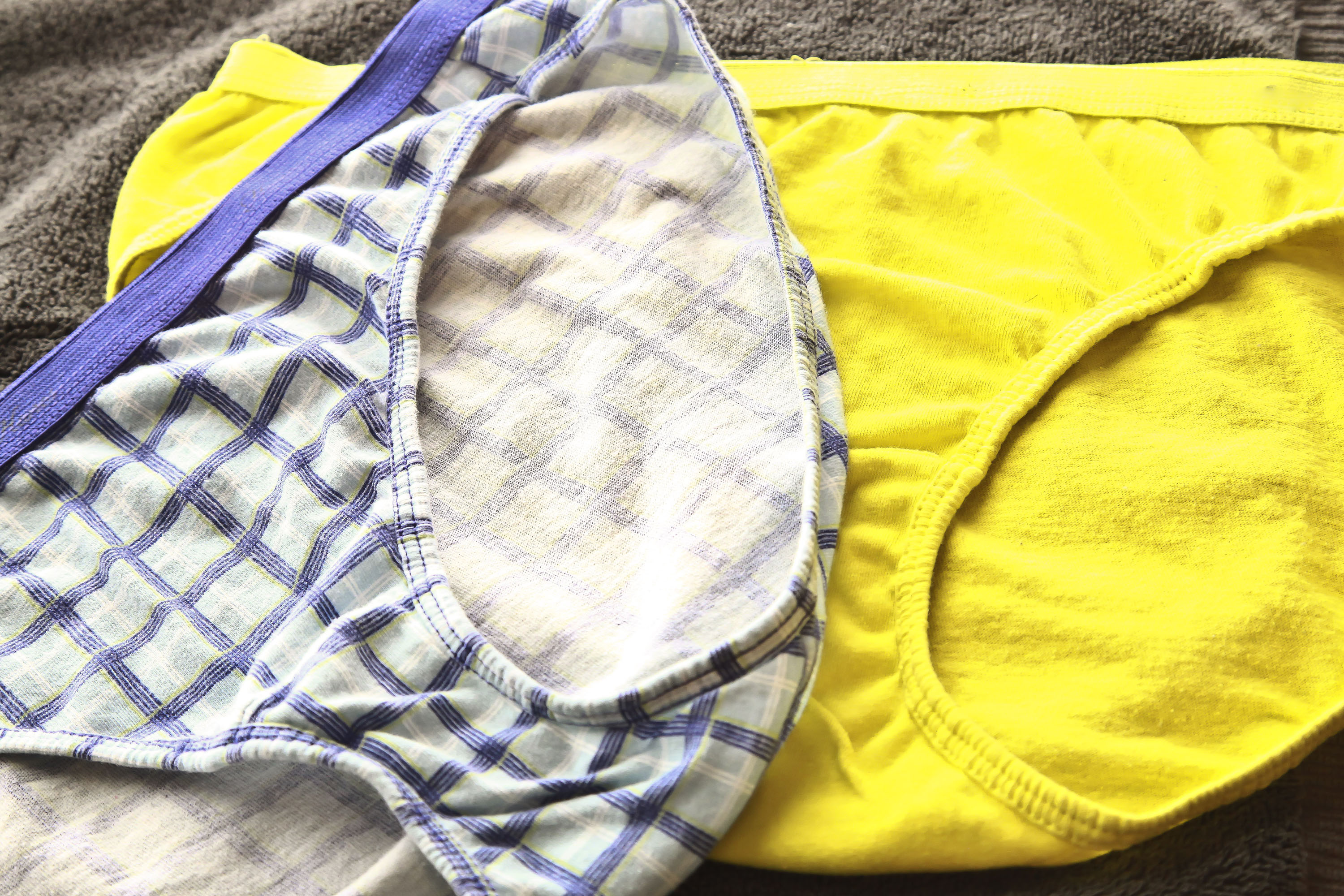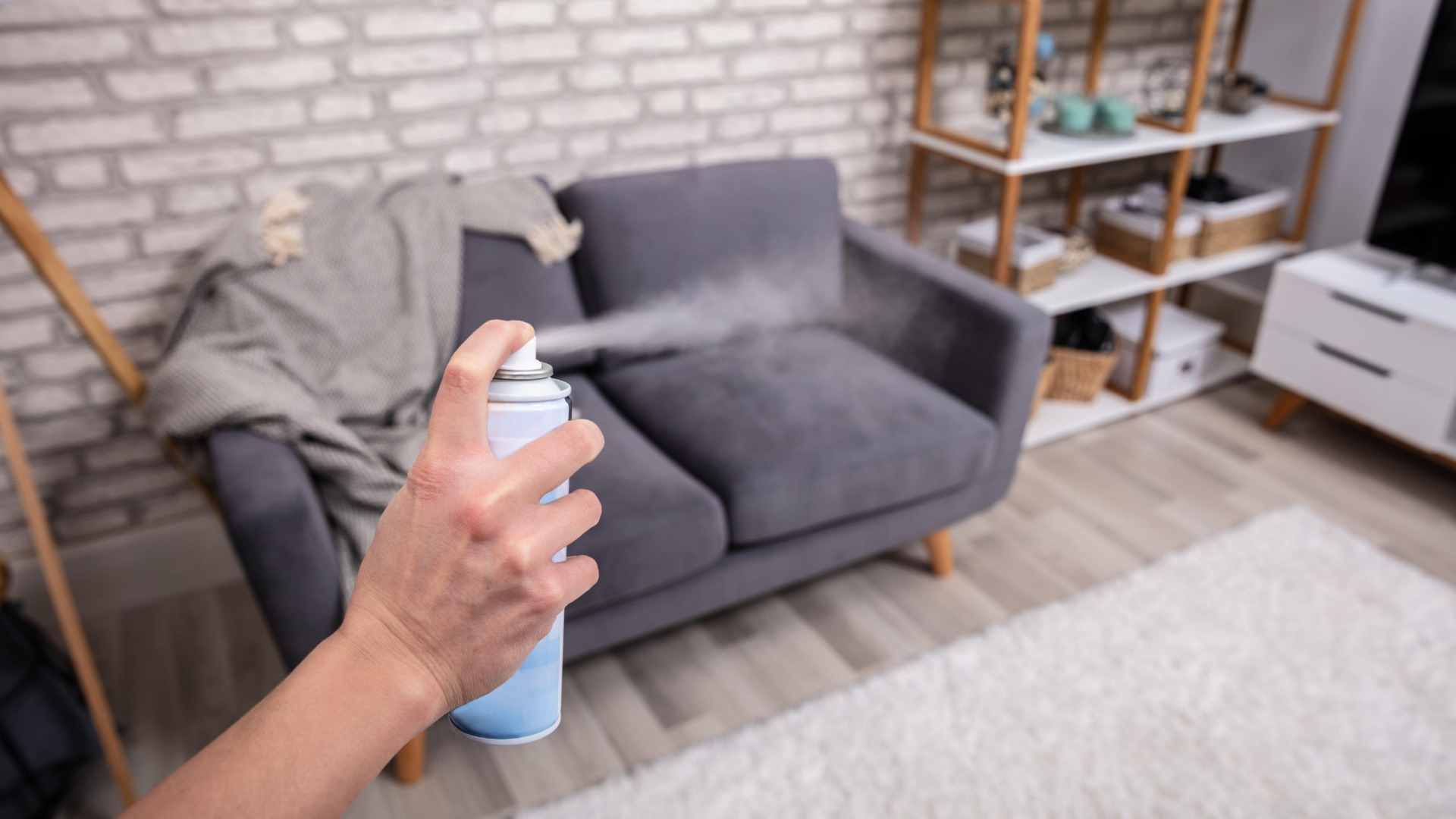Home>How-to Guides>For Women>How To Get Rid Of Bumps On Bikini Line


For Women
How To Get Rid Of Bumps On Bikini Line
Modified: August 5, 2023
Discover effective methods for women to get rid of bumps on the bikini line and achieve smooth, flawless skin.
(Many of the links in this article redirect to a specific reviewed product. Your purchase of these products through affiliate links helps to generate commission for Under-tec.com, at no extra cost. Learn more)
Table of Contents
- How To Get Rid Of Bumps On Bikini Line
- Introduction
- Understanding the Causes of Bumps on Bikini Line
- Preparing your Skin for Treatment
- Natural Remedies for Bumps on Bikini Line
- Over-the-Counter Products for Bumps on Bikini Line
- Medical Treatments for Bumps on Bikini Line
- Prevention Tips for Bumps on Bikini Line
- Conclusion
How To Get Rid Of Bumps On Bikini Line
Having bumps on the bikini line can be uncomfortable and unsightly, but with the right approach, you can effectively treat and prevent them. Whether you experience razor bumps, ingrown hairs, or folliculitis, there are several methods you can try to achieve smooth and bump-free skin in your bikini area.
Here are some steps you can take:
- Cleanse the area: Start by gently cleansing the affected area with a mild, fragrance-free cleanser. This helps remove any dirt, sweat, or bacteria that may be contributing to the bumps.
- Exfoliate regularly: Regular exfoliation helps remove dead skin cells and prevent the buildup of ingrown hairs. Use a gentle exfoliating scrub or a soft-bristle brush to exfoliate the bikini area once or twice a week.
- Shave with care: If you prefer shaving, make sure to prepare your skin properly. Start by softening the hair with warm water or a warm compress. Use a sharp razor and shave in the direction of hair growth to minimize irritation.
- Try alternative hair removal methods: Consider alternative methods like waxing, sugaring, or laser hair removal. These methods remove the hair from the root, reducing the chances of ingrown hairs and bumps.
- Apply a soothing aftercare product: After hair removal, apply a gentle and soothing product, such as aloe vera gel or witch hazel, to calm the skin and minimize inflammation.
- Avoid tight clothing: Wearing tight clothing or synthetic materials can trap sweat and bacteria, leading to irritation and bumps. Opt for loose, breathable clothing, especially after hair removal.
- Keep the area dry: Moisture can exacerbate bumps and irritation. Make sure to keep the bikini area clean and dry, especially after sweating or swimming.
- Consider topical treatments: If you experience persistent bumps, you can try over-the-counter creams or gels containing ingredients like salicylic acid or benzoyl peroxide. These can help reduce inflammation and exfoliate the skin.
It is important to note that everyone’s skin is different, so what works for one person may not work for another. If you continue to experience significant bumps or irritation, it is recommended to consult with a dermatologist who can provide personalized advice and treatments.
Introduction
For many women, maintaining a smooth and bump-free bikini line is essential, especially during the summer months or before heading to the beach. However, bumps on the bikini line can often be uncomfortable, itchy, and aesthetically displeasing. Understanding the causes of these bumps and having the right knowledge and tools to treat and prevent them is crucial for achieving the desired smoothness and confidence.
Bumps on the bikini line can be caused by various factors, including razor bumps, ingrown hairs, and folliculitis. Razor bumps occur when the hair follicles become inflamed and irritated after shaving. Ingrown hairs happen when the hair curls back or grows sideways into the skin instead of upwards, causing red, inflamed bumps. Folliculitis, on the other hand, is the inflammation of hair follicles due to bacterial or fungal infection, resulting in itchy and often pus-filled bumps.
The good news is that there are several ways to effectively treat and prevent bumps on the bikini line. This article will explore various methods, including natural remedies, over-the-counter products, and medical treatments, to help you achieve the smooth and bump-free bikini line you desire. It will also provide valuable tips for preventing future bumps and maintaining healthy skin in the bikini area.
It’s important to remember that everyone’s skin is unique, so what works for one person may not work for another. It may require some trial and error to find the most effective solutions for your specific needs. By following the tips and suggestions provided in this article, you can take proactive steps towards achieving a smoother and more comfortable bikini line.
Understanding the Causes of Bumps on Bikini Line
Before diving into the various treatments and prevention methods, it’s important to understand the underlying causes of bumps on the bikini line. By identifying the root cause, you can address the issue more effectively and make informed decisions about the best course of action.
Razor bumps, also known as pseudofolliculitis barbae, occur when the shaved hair re-enters the skin and causes inflammation. This typically happens when the hair is cut too short or when the hair follicle is curved. When the hair tries to grow, it gets trapped under the skin, leading to red, itchy bumps.
Ingrown hairs, also called razor bumps, are similar to razor bumps and occur when the hair curls back or grows sideways into the skin instead of growing straight up from the follicle. This can happen when the hair is cut too short or when dead skin cells block the hair follicle, forcing the hair to grow in the wrong direction.
Folliculitis is another common cause of bumps on the bikini line. It is the inflammation of the hair follicles, often caused by bacterial or fungal infections. When the bacteria or fungus enters the hair follicle, it can result in red, pus-filled bumps that can be painful and itchy.
In addition to these common causes, there are other factors that can contribute to the development of bumps on the bikini line. These include friction caused by tight clothing or excessive sweating, sensitivity to certain hair removal methods or products, and poor hygiene.
Understanding the specific cause of bumps on your bikini line can help you choose the most appropriate treatments and prevention methods. It’s essential to pay attention to your skin’s reactions and adjust your hair removal routine accordingly. By implementing the right strategies, you can effectively manage and prevent bumps on the bikini line, achieving the smooth and flawless look you desire.
Preparing your Skin for Treatment
Before starting any treatment for bumps on the bikini line, it’s crucial to properly prepare your skin. This helps to ensure that the treatment is more effective and reduces the risk of further irritation.
Here are some steps to prepare your skin for treatment:
- Cleanse the area: Start by cleansing the bikini area with a gentle, fragrance-free cleanser. This removes any dirt, sweat, or bacteria that may be present, allowing the treatment to penetrate the skin better.
- Exfoliate gently: Use a gentle exfoliating product or scrub to remove dead skin cells and unclog the hair follicles. Exfoliating helps to prevent ingrown hairs and allows the treatment to reach the affected area more effectively. Be careful not to over-exfoliate, as this can cause further irritation.
- Do not pick or squeeze bumps: Although it may be tempting, avoid picking or squeezing the bumps on your bikini line. This can lead to more inflammation, infection, and scarring. Allow the treatments to work their magic and let the bumps heal naturally.
- Moisturize appropriately: After cleansing and exfoliating, apply a gentle moisturizer to keep the skin hydrated. Look for products that are hypoallergenic and non-comedogenic to avoid clogging the pores.
- Avoid tight clothing: Opt for loose-fitting clothing made from breathable fabrics. Tight clothing can cause friction and irritation, which can worsen the bumps on your bikini line.
- Avoid heat and excessive sweating: Heat and sweat can further irritate the bumps on your bikini line. Avoid hot showers, steam rooms, saunas, and activities that cause excessive sweating until your skin has healed.
- Follow package instructions: If you are using over-the-counter products, make sure to carefully read and follow the instructions on the packaging. This will ensure that you are using the product correctly and safely.
By properly preparing your skin before treatment, you are creating a clean and suitable environment for the treatment to work effectively. Remember, consistency is key, so follow the treatment plan diligently to achieve the best results.
Natural Remedies for Bumps on Bikini Line
If you prefer natural alternatives or want to complement your treatment with gentle remedies, there are several natural options you can try to soothe and heal bumps on the bikini line. These remedies can help reduce inflammation, prevent infection, and promote the healing process.
Here are some natural remedies for bumps on the bikini line:
- Tea tree oil: Known for its antibacterial and anti-inflammatory properties, tea tree oil can help reduce redness and inflammation associated with bumps on the bikini line. Dilute a few drops of tea tree oil with a carrier oil like coconut oil and apply it to the affected area.
- Aloe vera gel: Aloe vera has soothing and healing properties, making it an excellent natural remedy for bumps on the bikini line. Apply pure aloe vera gel directly to the bumps to reduce inflammation and promote healing.
- Warm compress: Applying a warm compress to the affected area can help reduce swelling and promote blood circulation. Soak a clean cloth in warm water, wring out the excess, and gently place it on the bumps for a few minutes.
- Witch hazel: Witch hazel has astringent and anti-inflammatory properties that can help reduce the redness and irritation of bumps on the bikini line. Apply witch hazel to a cotton pad and gently dab it on the affected area.
- Oatmeal bath: An oatmeal bath can help soothe itchy and inflamed skin. Grind oats into a fine powder and add it to warm bathwater. Soak in the bath for 15-20 minutes to alleviate discomfort and reduce redness.
- Cold compress: If the bumps are particularly irritated or itchy, applying a cold compress can provide relief. Wrap some ice cubes in a clean cloth and gently press it against the bumps for a few minutes.
- Natural oils: Certain oils like coconut oil or jojoba oil can help moisturize the skin and reduce inflammation. Apply a small amount of oil to the affected area after cleansing and allow it to absorb into the skin.
While natural remedies can be effective for some individuals, it’s important to remember that everyone’s skin reacts differently. If you experience any adverse reactions or if the bumps persist or worsen, discontinue use and consult a dermatologist for further evaluation and advice.
Over-the-Counter Products for Bumps on Bikini Line
If natural remedies are not providing the desired results, or if you prefer a more targeted approach, there are several over-the-counter products available to help treat bumps on the bikini line. These products are specifically formulated to alleviate inflammation, reduce redness, and promote healing.
When choosing over-the-counter products, look for those that contain ingredients known for their anti-inflammatory and antibacterial properties. These ingredients can help calm the skin, reduce bumps, and prevent infection.
Here are some commonly used over-the-counter products for bumps on the bikini line:
- Topical creams or gels with salicylic acid: Salicylic acid helps exfoliate the skin, unclog pores, and reduce inflammation. Apply a thin layer of a salicylic acid-based product to the affected area after cleansing.
- Benzoyl peroxide cream or gel: Benzoyl peroxide helps kill bacteria and reduce inflammation. It is commonly used to treat acne but can also be effective for bumps on the bikini line. Apply a thin layer of benzoyl peroxide to the bumps once or twice a day, as directed.
- Hydrocortisone cream: Hydrocortisone cream can help reduce itching, redness, and inflammation associated with bumps on the bikini line. Apply a small amount to the affected area, following the instructions on the packaging.
- Antibacterial ointments: Antibacterial ointments, such as those containing bacitracin or neomycin, can help prevent infection and promote healing. Apply a thin layer to the affected area after cleansing.
- Exfoliating scrubs and cleansers: Look for gentle exfoliating scrubs or cleansers specifically designed for sensitive skin. These can help remove dead skin cells, unclog pores, and reduce the risk of ingrown hairs.
- Ingrown hair treatments: There are various products available that specifically target ingrown hairs. These products often contain exfoliating agents like glycolic acid or lactic acid to help release trapped hairs and prevent further ingrown hairs.
It’s important to carefully read and follow the instructions provided with each product. If you have any known allergies or sensitivities, patch test the product on a small area of skin before applying it to a larger area. Discontinue use if you experience any adverse reactions and consult a healthcare professional.
If over-the-counter products do not provide the desired results, it is recommended to seek advice from a dermatologist who can provide further guidance and prescribe stronger medications if necessary.
Medical Treatments for Bumps on Bikini Line
If natural remedies and over-the-counter products have not effectively addressed your bumps on the bikini line, or if you have persistent or severe symptoms, it may be time to consult a dermatologist. Dermatologists can provide medical treatments that target the underlying causes and provide long-term relief.
Here are some common medical treatments for bumps on the bikini line:
- Prescription topical creams: Dermatologists may prescribe topical creams or gels that contain stronger concentrations of ingredients like corticosteroids, antibiotics, or retinoids. These medications can help reduce inflammation, kill bacteria, and promote healing.
- Oral medications: In severe cases, dermatologists may prescribe oral medications, such as antibiotics or oral retinoids, to address the underlying causes of bumps on the bikini line. These medications can help combat bacterial or fungal infections and reduce inflammation from within.
- Chemical peels: Chemical peels involve the application of a chemical solution to the skin, which helps exfoliate the top layer and improve the overall texture. Chemical peels can help reduce bumps and smooth out the skin in the bikini area.
- Laser hair removal: Laser hair removal is a long-term solution for reducing bumps on the bikini line. It involves targeting the hair follicles with laser energy, which permanently reduces hair growth and minimizes the chances of ingrown hairs or razor bumps.
- Electrolysis: Similar to laser hair removal, electrolysis is a hair removal method that targets the hair follicles. It involves applying a small electrical current to each hair follicle, eventually leading to permanent hair removal and minimizing the risk of bumps.
It’s important to consult with a dermatologist to determine which medical treatment is most suitable for your specific condition. They will assess your skin, discuss your concerns and goals, and recommend the appropriate treatment plan.
Remember that medical treatments may have potential risks and side effects, so it is crucial to follow your dermatologist’s instructions and attend all follow-up appointments.
Prevention Tips for Bumps on Bikini Line
Preventing bumps on the bikini line is key to achieving and maintaining smooth and healthy skin in that area. By following these simple prevention tips, you can greatly reduce the chances of developing bumps and ingrown hairs:
- Choose the right hair removal method: Experiment with different hair removal methods to find the one that works best for your skin. Consider waxing, sugaring, or laser hair removal as they remove the hair from the root and reduce the risk of ingrown hairs.
- Keep your skin clean and exfoliated: Regularly cleanse and exfoliate the bikini area to remove dead skin cells and prevent the buildup of bacteria. Use a gentle exfoliating scrub or a soft-bristle brush in a circular motion.
- Use a sharp razor: If you prefer shaving, always use a sharp razor to minimize irritation and reduce the risk of razor bumps. Replace your razor blades regularly to ensure a clean and smooth shave.
- Shave in the direction of hair growth: When shaving, always go in the direction of hair growth to avoid cutting the hairs too short or causing them to curl back into the skin.
- Avoid tight clothing: Wearing tight clothing can cause friction and irritation, leading to bumps on the bikini line. Opt for loose-fitting, breathable clothing to allow your skin to breathe.
- Moisturize regularly: Keep your skin hydrated by applying a gentle moisturizer to the bikini area. This helps to prevent dryness and reduce the risk of irritation and ingrown hairs.
- Avoid touching or picking at the bumps: Picking at the bumps on your bikini line can worsen the inflammation and increase the risk of infection. Let the bumps heal naturally and resist the urge to touch them.
- Take breaks from hair removal: Give your skin a break from regular hair removal to allow it to recover and reduce the risk of irritation. Consider opting for a less frequent hair removal schedule to give your skin time to heal between sessions.
By incorporating these prevention tips into your regular bikini line care routine, you can minimize the occurrence of bumps and maintain smoother, healthier skin in that area.
Conclusion
Bumps on the bikini line are a common concern for many women, but with the right knowledge and approach, they can be effectively treated and prevented. Whether you opt for natural remedies, over-the-counter products, or seek medical treatments, it’s important to find a solution that works best for your specific needs.
Understanding the underlying causes of bumps on the bikini line, such as razor bumps, ingrown hairs, or folliculitis, can help you address the issue more effectively. By preparing your skin properly, whether through cleansing, exfoliating, or moisturizing, you create an environment that is more conducive to treatment and healing.
Natural remedies, such as tea tree oil, aloe vera gel, and warm compresses, can provide relief and promote healing. Over-the-counter products, including topical creams and gels with ingredients like salicylic acid or benzoyl peroxide, can also be effective in reducing inflammation and preventing infection.
In more severe cases, medical treatments such as prescription medications, chemical peels, laser hair removal, or electrolysis may be necessary. Consulting with a dermatologist can help you explore these options and find the most suitable treatment for your specific condition.
Regardless of the chosen approach, prevention is key to maintaining a bump-free bikini line. By choosing the right hair removal method, keeping the skin clean and exfoliated, and avoiding tight clothing, you can greatly reduce the chances of developing bumps and ingrown hairs.
Remember, everyone’s skin is unique, so finding the best solution may require some trial and error. It’s important to treat your skin with care, be patient, and consult with a healthcare professional if you have persistent or severe symptoms.
By following the tips and strategies outlined in this article, you can take control of your bikini line care and achieve a smooth, bump-free, and confident appearance.
